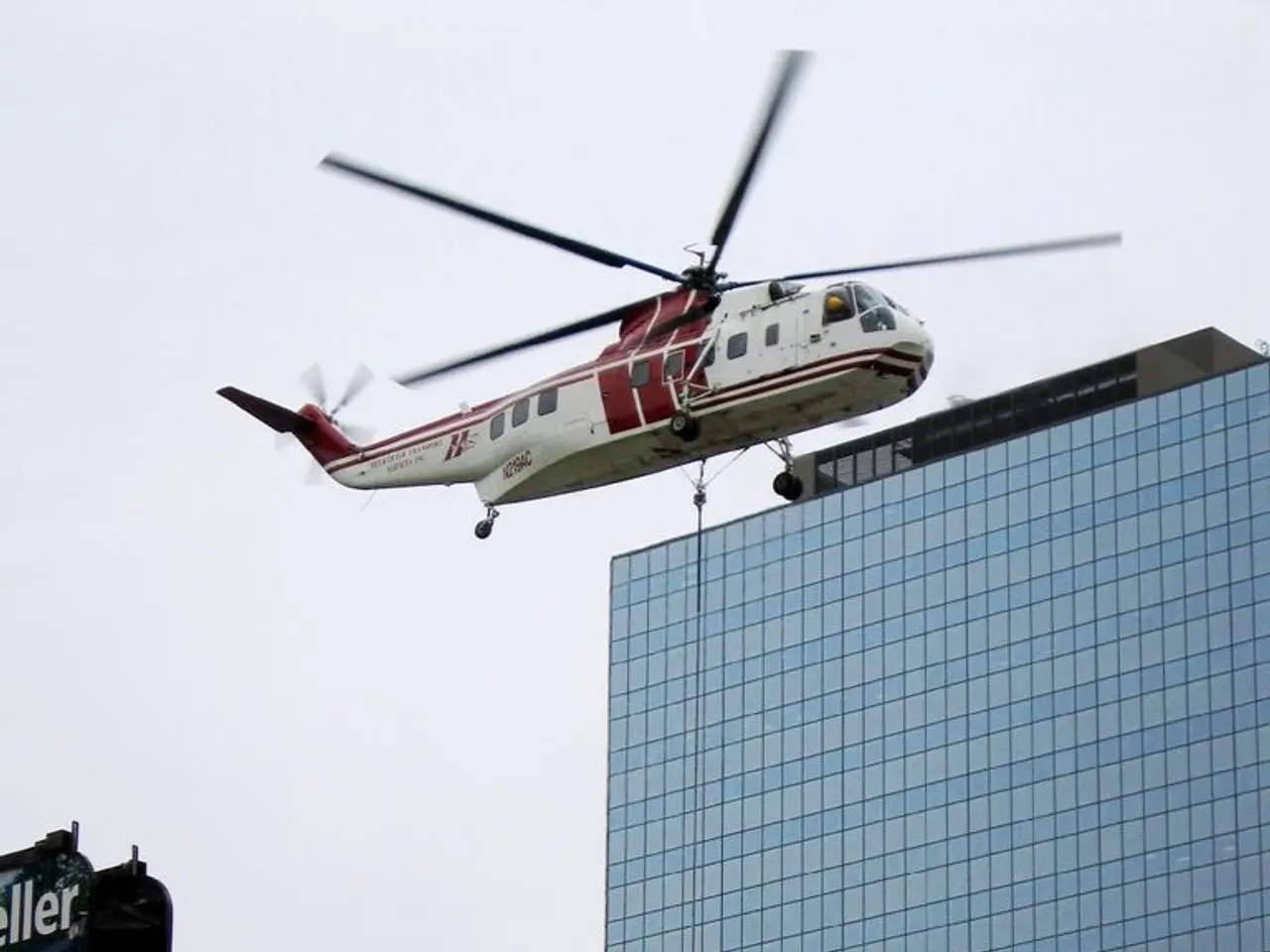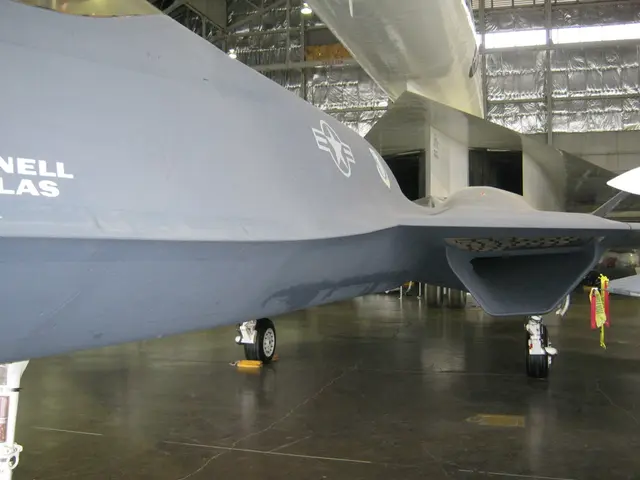Rotorcraft with adjustable wings, providing both vertical takeoff and landing capabilities, and flight features of fixed-wing aircraft. Further details available.
The Bell Boeing V-22 Osprey and Leonardo's AW609 are two groundbreaking tiltrotor aircraft that combine the versatility of helicopters with the speed and range of fixed-wing airplanes. Although they share a common design, their specifications and intended uses differ significantly.
The Bell Boeing V-22 Osprey, a military-focused tiltrotor, boasts an impressive array of features. Powered by two Rolls-Royce AE1107C turboshaft engines, each producing approximately 6,150 to 6,200 shaft horsepower, it can reach a maximum cruise speed of 276-306 mph (444-492 km/h) and has an unrefueled range exceeding 1,000 nautical miles (around 1,200+ nmi or 2,220 km). With a maximum vertical takeoff weight of about 47,500 pounds (21,546 kg) and a service ceiling of approximately 25,000 to 26,000 feet (7,930 meters), the V-22 Osprey is well-equipped to handle operations above certain threats and in difficult terrain. It can carry up to 24 fully loaded troops or up to 20,000 pounds (approximately 10 tons) of cargo internally or externally.
In contrast, the AW609, developed by Leonardo, is a civilian tiltrotor aircraft designed primarily for commercial and civil operations. Powered by 2x Pratt & Whitney Canada PT6C-67A turboshaft engines, it has a maximum cruise speed of about 275 knots (316 mph or 510 km/h) and a range of approximately 750 nautical miles (1,389 km). The AW609 can accommodate a crew of 2 and up to 9 standard passengers or 12 passengers for high-density seating (government use). It is 14.1 meters (46 feet) in length and has a width of 18.3 m (60 ft). The AW609's height in VTOL mode is 5.1 m (16 ft 9 in), and its service ceiling is up to 25,000 feet.
A summary table comparison reveals the differences between these two tiltrotor aircraft:
| Specification | Bell Boeing V-22 Osprey | AW609 (Civil tiltrotor) | |------------------------|------------------------------------|----------------------------------| | Engines | 2 × Rolls-Royce AE1107C (~6,200 shp each) | 2 × P&W PT6C-67A (~1,900 shp each) | | Maximum Cruise Speed | 276-306 mph (444-492 km/h) | ~316 mph (510 km/h) | | Range | Over 1,000 nmi (2,220 km) | ~750 nmi (1,389 km) | | Payload/Capacity | 24 troops or 20,000 lbs cargo | 7-9 passengers | | Service Ceiling | ~25,000 - 26,000 feet | ~25,000 feet | | Max Takeoff Weight | 47,500 to 55,000 lbs (21,500-24,900 kg) | ~15,000 lbs (approximate) | | Use | Military assault and transport | Civil and commercial applications |
The V-22 Osprey is a much larger, more powerful, and higher-capacity military aircraft focused on troop transport and cargo with robust engine power and range. The AW609 is smaller, designed for civil use with fewer passengers and lower power but maintains tiltrotor advantages of VTOL and fixed-wing speed.
Sources: [1] Bell Boeing V-22 Osprey reports [2] [3] Various online resources on Bell Boeing V-22 Osprey specifications and capabilities. [4] Leonardo's AW609 official website and manufacturer data.
The aerospace industry's trajectory is revolutionized by the innovative design of aircraft like the Bell Boeing V-22 Osprey and the AW609, with each engineered to cater to different sectors – military and civilian respectively. The finance aspect is highlighted in the formidable investments required for such advanced technology in the realm of aircraft design.








